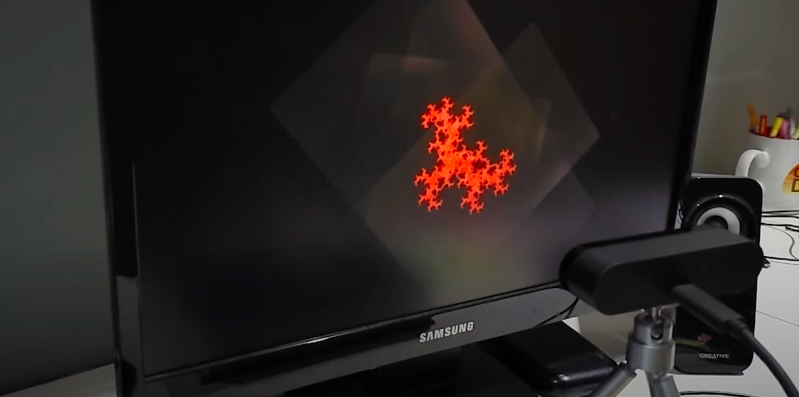Hackaday Links: July 18, 2021

Tell the world that something is in short supply, and you can bet that people will start reacting to that news in the ways that make the most sense to …read more Continue reading Hackaday Links: July 18, 2021
Collaborate Disseminate

Tell the world that something is in short supply, and you can bet that people will start reacting to that news in the ways that make the most sense to …read more Continue reading Hackaday Links: July 18, 2021

The mesmerizing properties of fractals are surprising as their visual complexity often arises from simple equations. [CodeParade] set out to show how simple a fractal is by creating them using …read more Continue reading Finding Fractals in the 1930’s
[IMSAI Guy] tore apart a device with a wireless network card and decided to investigate what was under the metal can. You can see the video of his examination below. Overall, it was fairly unremarkable, but one thing that was interesting was its use of an antenna on the PCB that uses a fractal design.
You probably know fractals are “self-similar” in that they are patterns made of smaller identical patterns. The old joke is that the B. in Benoit B. Mandelbrot (the guy who coined the term fractal) stands for Benoit B. Mandelbrot. You can think of it as …read more
Yeah. *hits bong* It’s like that. Continue reading Watching Ice Crystals Form Is Like Coming To Terms With Your Own Existence
Francesco de Comité is an Associate Professor in Computer Science at the University of Sciences in Lille, France, where he researches the 2D and 3D representation of mathematical concepts and objects. He’s presented papers on a variety of topics including anamorphoses, experiments in circle packing, and Dupin cyclides. His current project involves modeling and 3D printing sea shells. He’ll be presenting a paper on the topic at Bridges Conference in July. You can find his projects on Flickr as well as on Shapeways.
Hackaday: One of your recent projects involves creating fractal patterns and warping them into biologically-correct sea shell …read more
![]() Continue reading Interview: Francesco de Comité Makes Math Visually Awesome
Continue reading Interview: Francesco de Comité Makes Math Visually Awesome
One way to get around limitations in computing resources is to throw more computers at the problem. That’s why even cheap consumer-grade computers and phones have multiple cores in them. In supercomputing, it is common to have lots of processors with sophisticated sharing mechanisms.
[Henk Verbeek] decided to take 80 inexpensive PIC32 chips and build his own cluster programmed in — of all things — BASIC. The devices talk to each other via I2C. His example application plots fractals on another PIC32-based computer that has a VGA output. You can see a video of the device in action, below.
The …read more
Think not of what you see, but what it took to produce what you see
Benoit Mandelbrot
Randomness is all around you…or so you think. Consider the various shapes of the morning clouds, the jagged points of Colorado’s Rocky Mountains, the twists and turns of England’s coastline and the forks of a lightning bolt streaking through a dark, stormy sky. Such irregularity is commonplace throughout our natural world. One can also find similar irregular structures in biology. The branch-like structures in your lungs called Bronchi, for instance, fork out in irregular patterns that eerily mirror the way rivers bifurcate into …read more